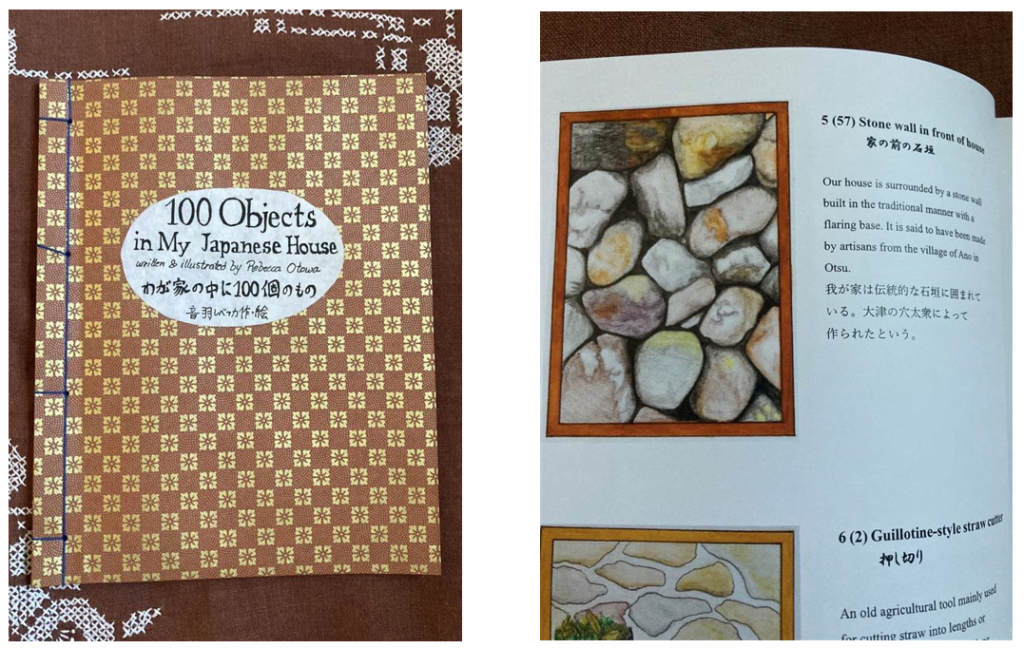
What an honor to hold the newest book by author Rebecca Otowa in my hands. Inspired at Miidera Temple by a picture showing “100 Views of Miidera” in the style of small cards, 100 Objects in My Japanese House contains intricate, colorful images drawn by the author and divided into three broad categories: Exterior, Deities, and Interior. Those who are familiar with Rebecca’s other published works, in particular At Home in Japan (Tuttle 2010), understand her deep familiarity with Japanese customs, and that much of this connection was founded in a relationship with the centuries-old farmhouse she has resided in continuously since 1986. 100 Objects in My Japanese House provides an even deeper glimpse into the author’s immediate surroundings – a dragon bronze incense holder, a black and white photograph, a heavenly bamboo plant, a traditional sewing box, a futon fabric design, a summer neck pillow, and many others. A particular favorite of mine is the old stone wall in front of the house (pictured below) because it captures so well the gray, brown, and yellowed hues which come with the passing of time.
In addition to the 100 drawings, which all include explanations in both English and Japanese, Rebecca has chosen yuzen paper for the front and back covers, as well as the use of yotsume toji – the traditional method of stab binding which was introduced to Japan in the Muromachi Period and remained popular until the Meiji Period. Such inspiration came to Rebecca in a dream and was appealing because of her personal aversion towards computers and complications which come with modern-day digital self-publishing.
Creation of this special limited edition included the following steps (in order), as detailed by the author:
1. Draw the pictures (all images drawn by the author over a period of three years)
2. Take photos of the pictures (taken by a friend/professional photographer during four visits over the course of a year, paid for by the author herself)
3. Set up the photos and captions in preparation for printing (done on the author’s personal computer using Microsoft Word, which was then saved in PDF format)
3. Copy the PDFs (While initially washi paper was considered, it was too difficult and expensive, so regular printing paper was purchased from a local stationery store. 900 pages were required.)
4. Fold all pages in half (by the author herself, and required for yotsume-toji binding)
5. Put the folded pages in book order (by the author herself, and for the limited edition of 30 copies)
6. Purchase yuzen paper for the covers (bought by at the author at a paper shop in Nagahama, Shiga Prefecture; One sheet makes three covers. The paper shop staff provided introduction to a factory for traditional binding.)
7. Take books to the binder and provide special explanations, such as the need to bind the book on the left instead of the right (as is the style of most traditional books printed in Japanese)
8. Wait three weeks
9. Make title labels for the cover and glue them on, sign and number books (by the author herself)
Total Cost: Approximately 2000 USD
Kudos to Rebecca on carrying out her envisioned project to the end, which shows us that such special creations are still possible without the use of too much complicated technology and a reliance on an outside publisher. 100 Objects in My Japanese House is a unique work of art and a significant contribution toward keeping alive the knowledge of both countryside and traditional Japanese living.


Left: Completed book with handwritten title label; Right: Example page (with old stone wall)
